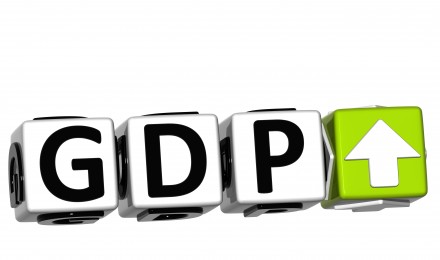According to the Bureau of Economic Analysis (BEA) second estimate for the Gross Domestic Product (GDP) first quarter (Q1), the economy grew at a slower pace than originally reported. For the period Q4 2012 to Q1 2013, BEA revised the annualized growth rate to 2.4 percent compared to an original estimate of 2.5 percent. In the fourth quarter 2012, the economy grew at an annual rate of 0.4 percent.
The most recent estimate is based on more comprehensive data than what was available for the “advance” estimate that came out last month’s report.
The Gross Domestic Product is the primary measurement of the market value of goods and services produced from labor and property in the United States in a year. In 1991, the GDP replaced the Gross National Product indicator as the key measurement of U.S. production.
GDP provides economists, investors, policy makers and businesses a yardstick for gauging the productivity and health of the U.S. economy.
Report details
Increases in personal consumption expenditures (PCE) and private inventory investment (1.8%), residential fixed investment (2.2%) and an upturn in exports (0.8%) were counterbalanced by decreases government spending due to cuts at the local and state (-2.4%) and federal (- 8.7%) levels.
Commercial construction activities decreased from the initial BEA estimate and curtailed first quarter expansion. Business spending on equipment and software grew at a faster pace and the trade deficit had less of an impact than anticipated.
Consumer spending recorded stronger gains than projected and bodes well for supporting an economy that has been dealt a double hit with a two percent hike in payroll taxes and a $85 billion in federal budget cuts in the first quarter of the year.
The lag effect of higher taxes and fiscal tightening may become obvious in the second quarter as economists surveyed by Bloomberg expect a median estimate of 1.6 percent. For the second half of the year, many analysts predict a 2.4 percent growth rate.
Domestic final sales
The domestic final sales metric increased more than expected. The original estimate of 1.5 percent was revised up to 1.8 percent—surpassing inventories, exports and imports. Government spending fell for the 10th time in the last 11 quarters, and will continue to be curtailed with sequestration.
Budget cuts in the Defense Department budget dropped expenditures to an annual rate of 12.1– compared to the initial report of 11.5 percent. In Q4 2012, defense spending fell 22.1 percent. The back-to-back drop in defense expenditures represents the biggest decline, in two consecutive quarters, since Armed Forces were demobilized in the aftermaths of the Korean War.
Savings, disposable income and profits
The consumers continue to open their purses inn Q1, but at the expense of saving less. In Q1, the household saving rate, which was initially reported as 2.6 percent, decreased to 2.3 percent—down from a 5.3 percent savings rate for Q4 2012.
Adjusted for inflation, disposable income, which was previously reported as dropping 5.3 percent, declined 8.3 percent. In Q1 2012, disposable income increased 8.9 percent. The fall off in Q1 is the biggest drop since Q3 2008.
Corporate earnings declined 1.9 percent in Q1, from the last quarter in 2012, and a year-over-year increase from Q1 2012.







